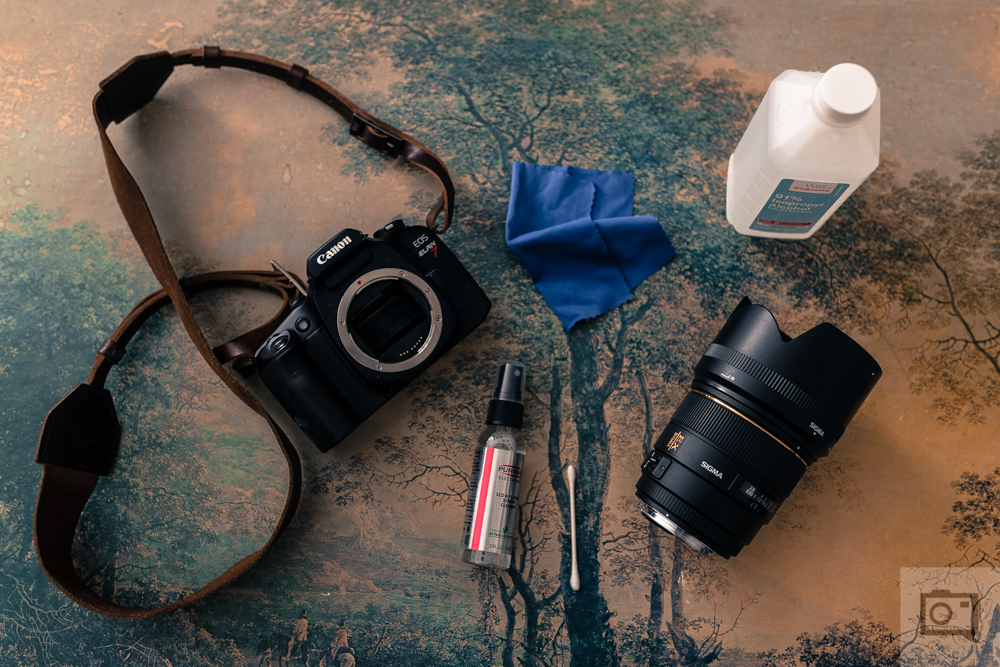You just got a new camera and bought a brand-spanking lens. But do you know how to maintain your lenses? We’ve done a bunch of tutorials on it over the year. And in our camera bags, we keep a camera lens cleaning kit. They’re a few essential items that support the lenses working perfectly fine. Head on below to see the best items to have in your camera lens cleaning kit.
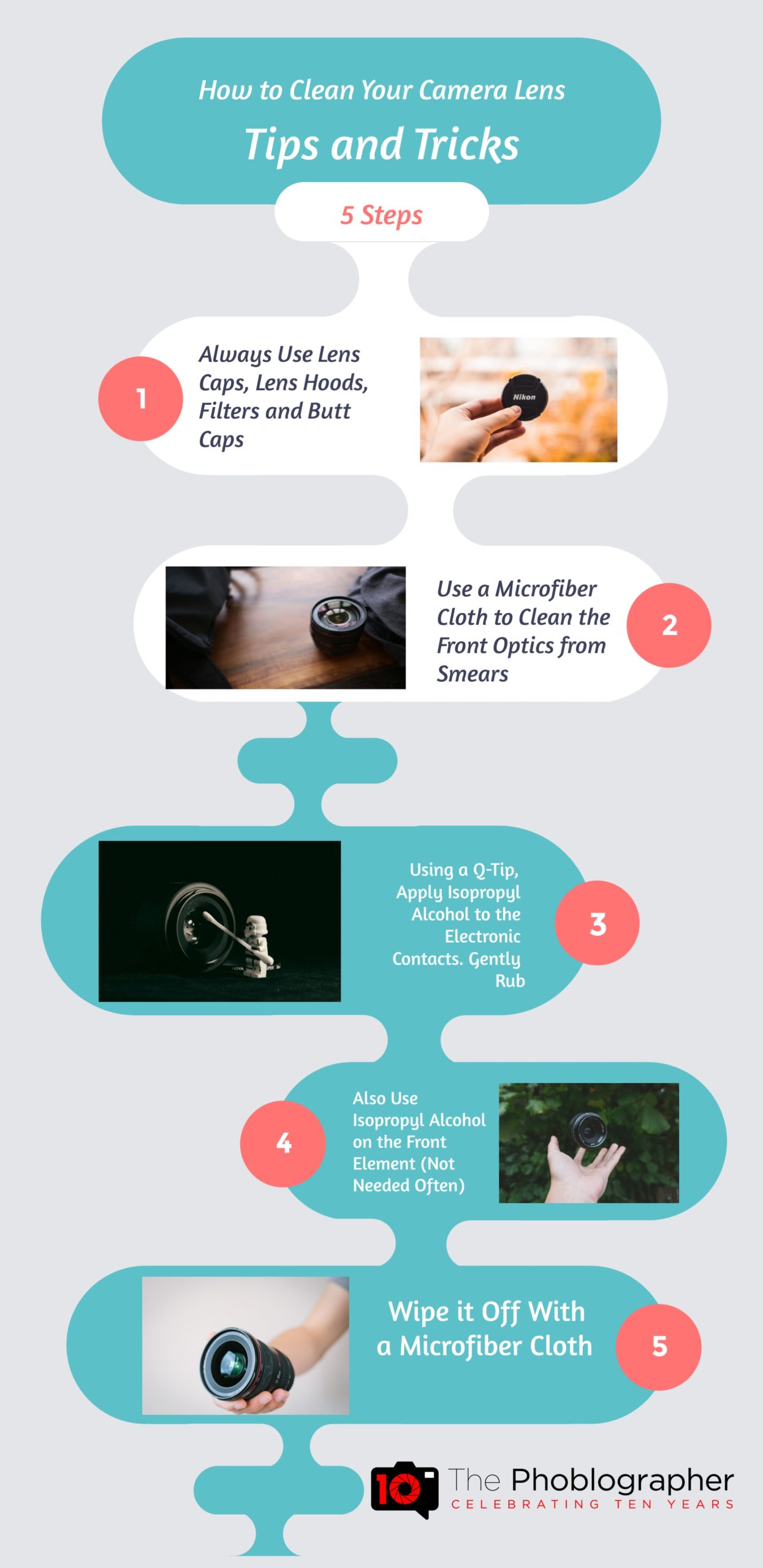
What Not to Do
Here’s what not to do when cleaning your camera lens:
- Don’t use Vodka. Yes, this is an old myth. The idea is that since this is one of the cleaner types of consumable alcohol, you should use it to clean your lenses. But that’s not the case. And in the hyperlinked article, tons of industry experts say it’s an awful idea. “We can only recommend conventional lens cleaning fluids for lens cleaning,” is what one rep told us.
- Don’t use vinegar, either. A while back, we saw an awful thread about someone who decided to clean the lens elements of their glass with vinegar because they saw it on YouTube. Credible sources are much better, such as experts at this. Tamron, for example, uses methanol alcohol.
- The CIA published a guide to cleaning camera lenses many years ago. They even talk about using syringes with air in them. It’s a really fascinating read.
- Check out the below infographic that should also be able to help you how to clean a camera lens!
- Don’t use your shirt to clean a lens. It’s going to scratch the lens elements.

Isopropyl Alcohol and Makeup Applicators
Isopropyl alcohol is universally seen and recommended as one of the best things that a photographer can have in their camera lens cleaning it. This is a specific type of alcohol that’s otherwise known as rubbing alcohol. It’s also important for cleaning many electronic devices. But most fascinating is the fact that you can’t really get anything purer because of regulations. So for the everyday person, this is the cleaning you’re going to get.
Why Your Camera Lens Cleaning Kit Needs it
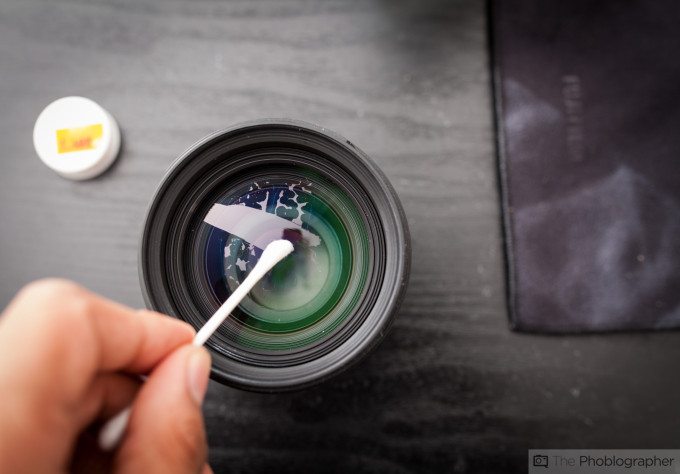
We mostly use isopropyl alcohol for cleaning the lens contacts. Doing that keeps the lens and camera communicating effortlessly. So it will help with exposure readings and autofocus communication. However, it can also help with liquids forming sticky coatings on your lenses. Ever been at a party and beer or wine spills on the front element? Well, that’s why you should have a lens filter. But most photographers end up using a lens hood instead. Hoods don’t protect against issues like this.
T
How to Use It
Here’s a quote from a previous article we’ve done on using both Purosol and Isopropyl alcohol. That article will give you a much deeper dive into how to do this. The below quote only talks about cleaning the elements. But the lens contacts are also a concern. Consider using a clean makeup applicator or a Q-tip to tidy up the contacts. Also, always be sure to use clean alcohol.
When cleaning the glass of the lenses, I truly only recommend cleaning the front element and perhaps the back element if it’s needed.
When using Purosol, simply spray it on the elements and wipe it off in a circular motion using a soft microfiber cloth. Add a bit of pressure to ensure that streaking doesn’t happen.
When using Isopropyl Alcohol, you can use a cotton swab and spread the alcohol around rubbing it to get all around the surface. When you’re done, wipe it down with the microfiber cloth. This method is really good if you’ve come from the outdoors and something like a bug is stuck on your lens.
Microfiber Cloth (A Good One)
A microfiber cloth is a pretty common item. If you wear eyeglasses, you’ll get them when you go tot he eye doctor within the glass case. You also sometimes get them with camera lenses. They’re excellent tools for cleaning smudges and oil off of a camera then. But after a while, they get very dirty and need to be replaced or washed.
Why Your Camera Lens Cleaning Kit Needs it
We already talked about not using your shirt to clean a camera lens. But in addition to possibly getting your shirt or clothing dirty, your clothes aren’t designed to really get smudges and all out. If you smudge the lens and then rub it off with your clothing, the smudge might get worse. If you’re looking for that effect, then it’s working just as you intended it to. However, most of the time you’re trying to make the front element cleaner.
How to Use It
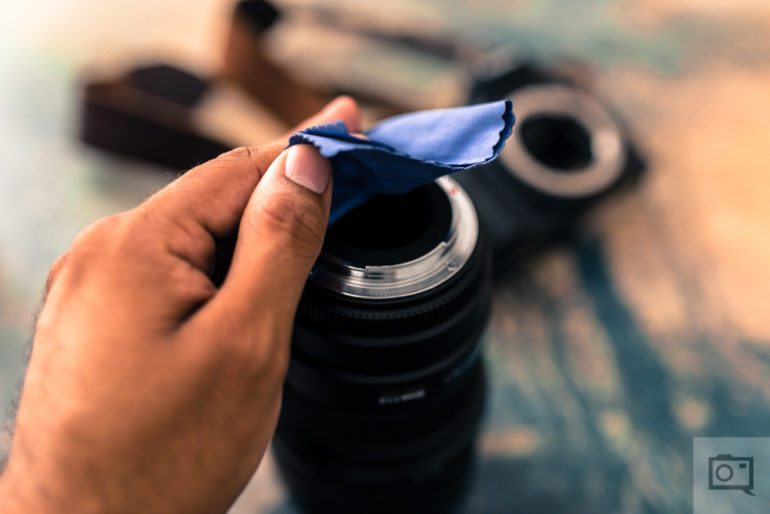
Generally speaking, I’d follow exactly what eye doctors say: don’t clean your lenses without them being wet. So use some lens cleaning solution or isopropyl alcohol like we’ve talked about. Then use the microfiber cloth to clean the lens. What a lot of folks don’t realize is that you need to clean your microfiber cloths in the same way that you need to clean bar mops in your kitchen.
I
Air Blower
The air blower is one of the most important pieces of your camera lens cleaning kit. Essentially, it’s a little tiny air blower. We’re not talking about compressed air cans that use chemicals — instead, it’s a little hand pump. It’s gentle enough on the elements within the lenses and the motors. Years ago, we saw someone use a compressed air can on a Canon 40mm f2.8 STM lens. It pushed the front element into the lens and broke the lens motor.
The key here is being gentle. Though camera gear has improved, you’d be amazed at how fragile it still is.
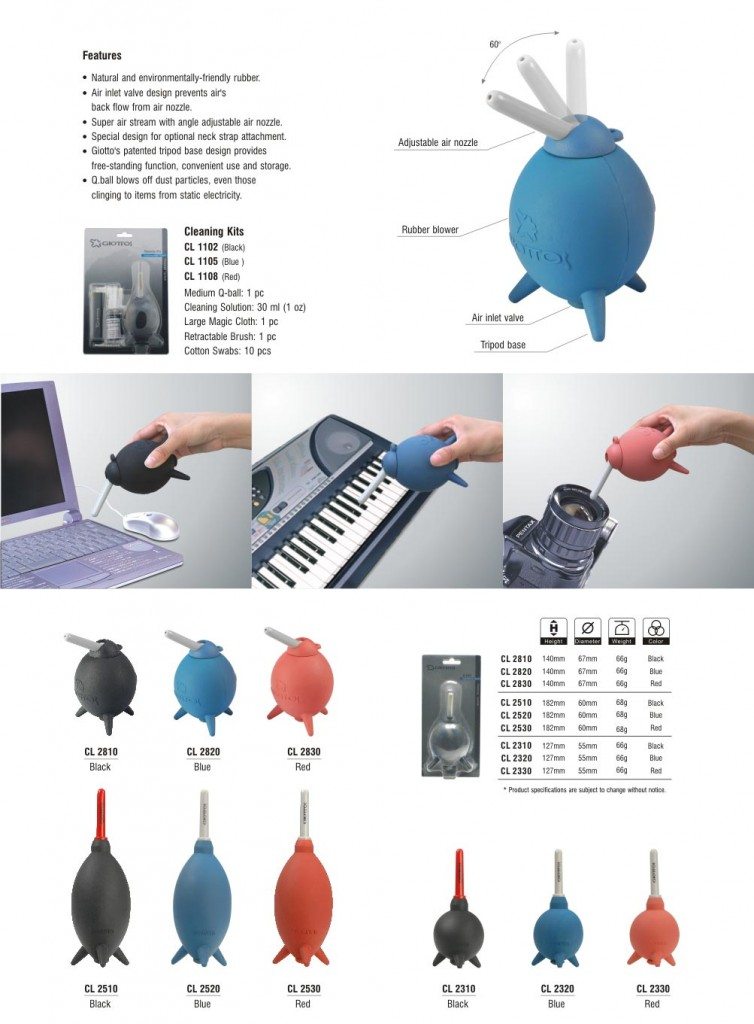
Why Your Camera Lens Cleaning Kit Needs it
The air blower isn’t just essential to your camera lens cleaning kit, but your camera cleaning kit too! It cleans sensor dust off for the most part. It also generally just cleans dust and debris out of the lens.
How to Use It
When you’re using an air blower, make sure that you lift the product up so that the dust falls down onto the ground. Make sure to also blow the air upward.
Arctic Butterfly
The last item we’re talking about is one that we’ve used for over a decade. The arctic butterfly is great at generally brushing things off of a lens and cleaning a sensor when used properly. It also has a function to shake dust and debris off it it. Moreover, it lasts a really long time.
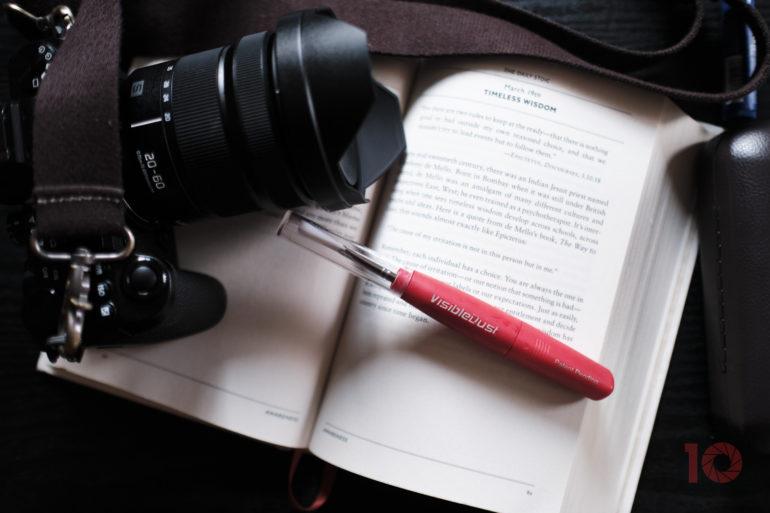
Why Your Camera Lens Cleaning Kit Needs it
It’s a different way to get tough dust off the sensor and the lenses.
How to Use It
We’re quoting a previous article here:
- Hold your camera above you with the exposed sensor facing down to the ground.
- Activate the Arctic Butterfly to spin. This will clean it. Then turn it off.
- Do not ever have the Arctic Butterfly activated and touch the sensor on your camera. You’ll damage it.
- With your camera still above you and the sensor still facing downward, gently brush the sensor.
- Start with the edges and go towards the sensor. Use incredibly gentle brushes.
- Every now and again, pull the Arctic Butterfly away from the sensor and activate it to clean it.
- When the sensor looks clean to you, cover the camera back up.
- Put the cap on the Arctic Butterfly and activate it. This will straighten all the hair.
This is everything that you need in your camera lens cleaning kit. Make sure to always keep these in your camera bag, just in case. Lots of cameras have shields that protect the camera sensor, so they need this far less. But your lenses, especially those without weather resistance, will suffer from problems if they’re not cleaned and maintained. A little bit of work can keep your lenses working perfectly fine.


